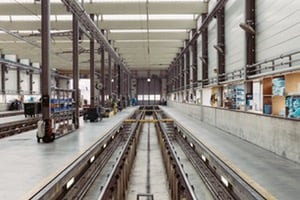 Management expert James P. Womack, Ph.D., is the founder and senior advisor to the Lean Enterprise Institute, Inc., a nonprofit training, publishing, conference, and management research company chartered in August 1997 to advance a set of ideas known as lean production and lean thinking, based initially on Toyota’s business system. He, along with Daniel T. Jones, founder and Chairman of the Lean Enterprise Academy in the U.K penned the influential work, Lean Thinking: Banish Waste and Create Wealth in Your Corporation in 1996. Although much of the material they cover is not new, they present it with a unique structure that rests on five core principles of Lean manufacturing. Although their focus is on the manufacturing sector, these principles can be put to work in other industries including healthcare, construction, higher education and software development.
Management expert James P. Womack, Ph.D., is the founder and senior advisor to the Lean Enterprise Institute, Inc., a nonprofit training, publishing, conference, and management research company chartered in August 1997 to advance a set of ideas known as lean production and lean thinking, based initially on Toyota’s business system. He, along with Daniel T. Jones, founder and Chairman of the Lean Enterprise Academy in the U.K penned the influential work, Lean Thinking: Banish Waste and Create Wealth in Your Corporation in 1996. Although much of the material they cover is not new, they present it with a unique structure that rests on five core principles of Lean manufacturing. Although their focus is on the manufacturing sector, these principles can be put to work in other industries including healthcare, construction, higher education and software development.
Listen to the episode:
They introduce the principles this way,
“After interactions with many audiences and considerable reflection, we concluded that Lean thinking can be summarized in five principles: precisely specify value by specific product, identify the value stream for each product, make value flow without interruptions, let the customer pull value from the producer, and pursue perfection. By clearly understanding these principles, and then tying them all together, managers can make full use of Lean techniques and maintain a steady course."
Here is a closer look at each principle.
Value
Value is assigned to a product or service only by the customer and only in the context of a certain point of time and price. For example, you’d probably never pay $9 for sixteen ounces of beer at the grocery store, but may very well do it at a ballgame. The value you assign to the beer is reflective of the current situation. From the standpoint of the customer, value is the only reason that product producers and service providers exist. Lean thinkers are highly motivated to understand how the customer perceives value and sorting out what the customer is willing to pay for and what they are not. They also require evidence of what the customer values and don’t see complexity as value in itself.
Value Streams
The value stream encompasses every raw material, process, piece of equipment, and all of the labor necessary to get the product into the hands of the customers. The object of Lean thinkers is to assess the value stream and maximize it as much as possible, eliminating wasteful effort. Womack and Jones concluded that organizations would find three types of actions:
- Those that obviously add value
- Those that don’t create value, but are necessary due to current technologies and assets
- Those that have no value and can be targeted for elimination
Flow
Flow is how work progresses through a system. When a system is in order, it can be said to have “good” flow. With work moving steadily and predictably. When flow is interrupted, the work starts and stops at irregular intervals. Breakdowns in flow create the opportunity for waste. A consistent flow leads to more reliable delivery, and greater value. Flow involves raw materials, work-in-progress, finished goods, operators, machines, information, and engineering. Lean thinkers work to keep them all running in harmony.
Pull
Pull is the idea that value should be created as close as possible to when it is needed by the customer. By taking an on-demand approach to production, Lean leaders can eliminate waste associated with inventory, transportation, movement, and motion. Evidence that a team is practicing the principle of flow can be seen on the factory floor in the use of Kanban boards or cards. It can also be seen in software development teams using agile techniques to streamline the production, testing, and release of code.
Perfection
Womack and Jones know that most of us believe that no one or nothing is ever perfect, but they embrace it anyway.
“As organizations begin to accurately specify value, identify the entire value stream, make the value-creating steps for specific products flow continuously, and let customers pull value from the enterprise, something very odd begins to happen. It dawns on those involved that there is no end to the process of reducing effort, time, space, cost, and mistakes while offering a product which is ever more nearly what the customer actually wants. Suddenly perfection, the fifth and final principle of lean thinking, doesn’t seem like a crazy idea.”
An organization that embraces these five principles of Lean will embark on a never ending, yet important path. The most successful ones look for ways to support employees in this work and reinforce the value to the organization. They celebrate success and hold each other accountable for adherence to these ideals. If you haven’t had the pleasure, read Lean Thinking is a great place to start.



Add a Comment